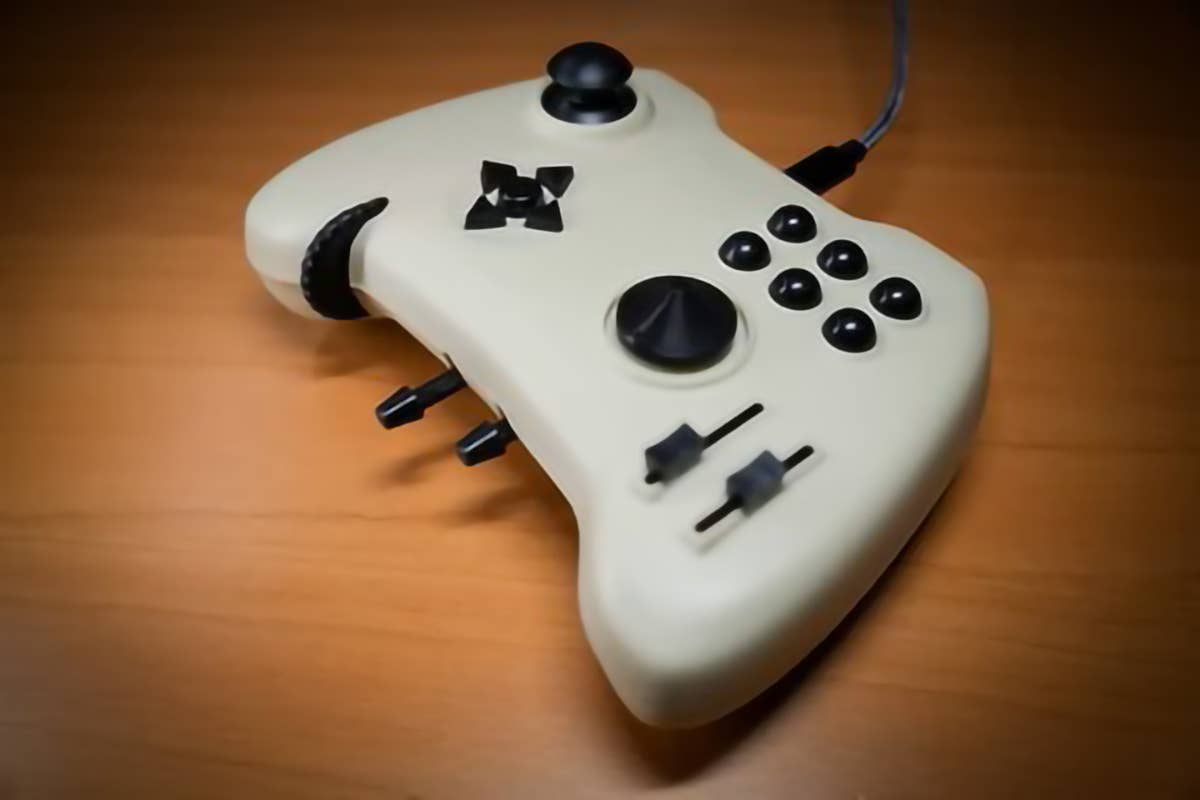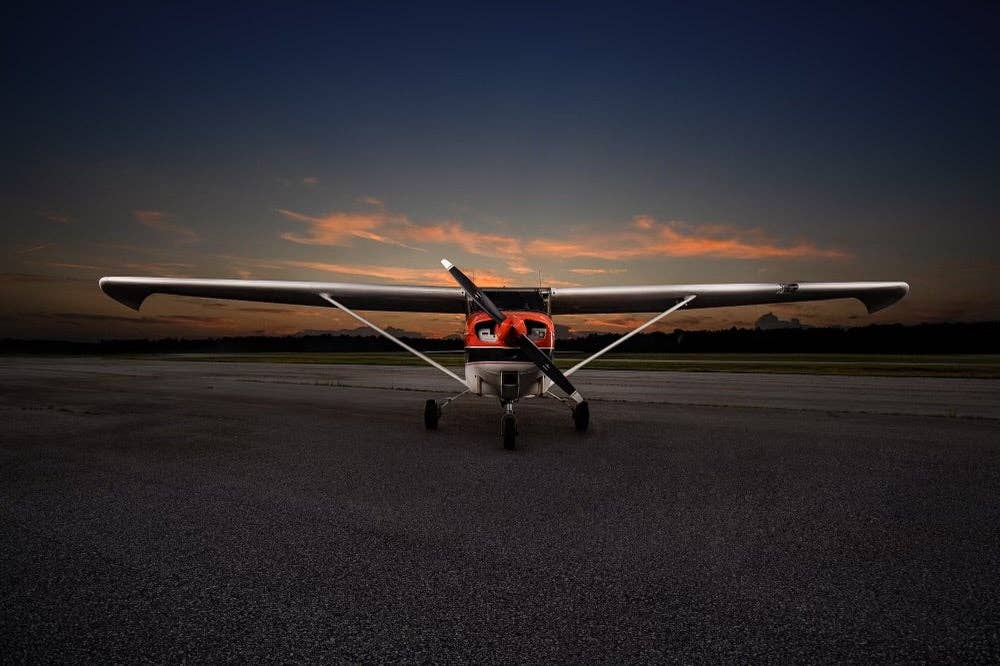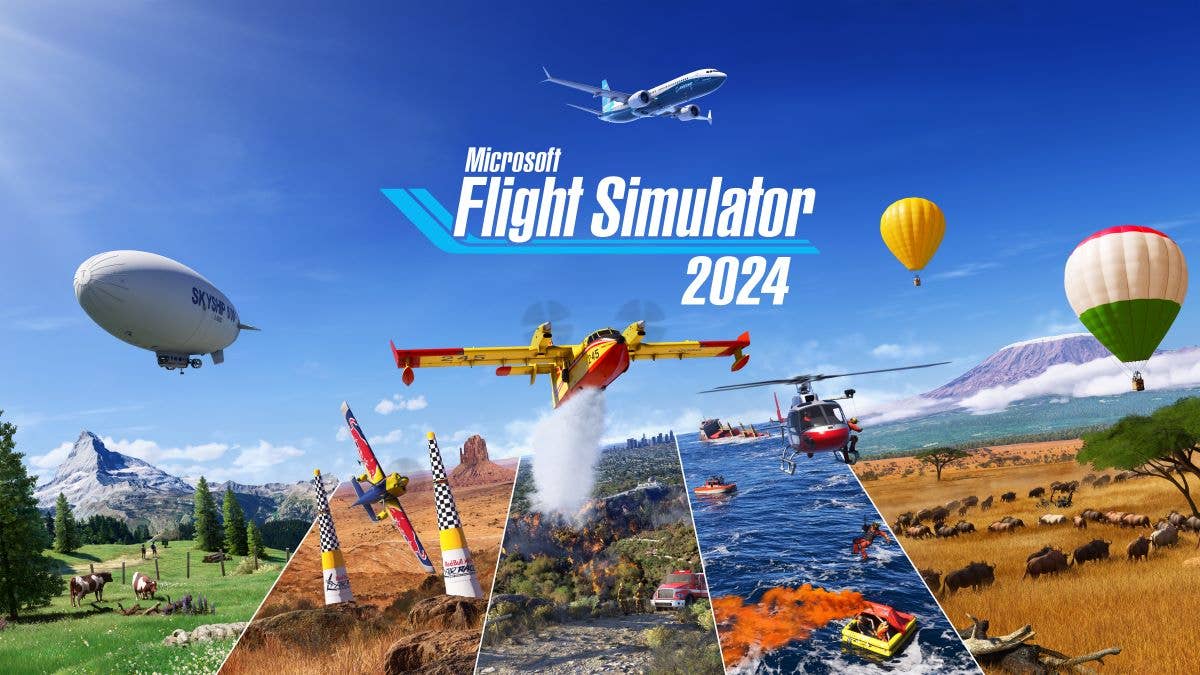Yawman Arrow Hand-Held Cockpit Released
The light and portable design travels well.

The Yawman Arrow controller was optimized for Microsoft Flight Simulator and designed to serve as a “hand-held cockpit.” [Courtesy: Yawman]
There are those who will tell you that aviation gaming is almost as expensive and space intrusive as actual flying. You probably know someone with a virtual cockpit setup that's larger than the interior of a Cessna 172.
If you are looking for something with considerably less space disruption and small enough to fit in a carry-on bag, check out the Yawman Arrow. The company notes the Yawman controller puts the yoke, throttle, and rudder pedals in your hands. The device went on the market as of Monday for $249, available for purchase at yawmanflight.com and Sporty's Pilot Shop. The device was created by brothers Thomas and Dwight Nield, professional aviators, and John Ostrower, aviation media creator, and founder of The Air Current.
The company, based in Carmel, Indiana, calls it a "fully functional hand-held cockpit,” noting there are 21 buttons and seven axes available for programming the Yawman Arrow with added multipress capability "optimized for Microsoft Flight Simulator that makes the controller infinitely configurable for everything from basic aircraft function for flying and simulator commands to advanced autopilot interaction." The goal is to radically reduce the need for both keyboard and mouse/trackpad when flying.
The Arrow was "designed for simmers by simmers." It is built in the United States and can be a primary controller on simmers’ Windows or Apple laptop, desktop, or Android tablet. Its portability makes it different from other devices as it can be used on the road with a gaming laptop or Android tablet, or cast to a television from a laptop.
“This has been a methodical journey to bring together all the familiar pieces of flight simulation hardware into an ultra-mobile form factor without compromising the virtual flying experience,” said Yawman co-founder Thomas Nield. “We have achieved that, and we are excited to deliver it to the simming community. We’ve brought a deliberate precision to Yawman, making it a multifunction controller that requires no additional configuration software to maximize its plug-and-play utility.”
The Arrow is designed to work with virtual aircraft of all types, from smaller general aviation airplanes and helicopters to high-performance fighters and commercial jets. Company officials note the portable controller can be used for real-world flight familiarization, preparation, and training without complex hardware.
The Details
The Arrow features controls for pitch, yaw, and roll, and two vernier-style engine controls like those found on many piston-powered aircraft. When the player is flying a jet, these controls activate spoilers and thrust reversers.
The device has an integrated trim wheel, along with two shoulder bumper buttons, a five-button D-pad, and five-way hat switch for independent viewing angles and video recording. The user can access a multifunction six-pack of programmable buttons to customize their flight experience.
The Arrow is fully compatible with Microsoft Flight Simulator on PC, Laminar Research X-Plane on PC and macOS, Infinite Flight for Android, Lockheed Martin Prepar3D, DCS World—and more—as well as nonsimulation games that support HID joystick controls. However, it is not compatible with iOS devices or Xbox.
We Test It
FLYING had a chance to test fly the Arrow. I was assisted by Michael Puoci, one of my learners who is a professional aviation game designer. When Puoci, call sign "Puffin," was training for his private pilot certificate, he utilized sim technology as an enrichment tool, flying every lesson at least twice before he got out to the airplane That's the beauty of the syllabus; he knew what was coming next and was able to prepare.
Puoci builds games and test flies them on a regular basis. We met at the Museum of Flight in Seattle. He was armed with his laptop loaded with X-Plane 12 for the demonstration. We tried the Arrow in a Cessna 172 as that is the airframe we both have the most time in.
It was easy to set up the Arrow to interface with X-Plane—just a few clicks. No additional software configuration was required.
- READ MORE: Setting Up Your Sim
Full disclosure: I had never attempted to fly using a game controller before, so there was a learning curve.
During the takeoff from virtual King County International Airport/Boeing Field (KBFI), the left turning tendency got the better of me as I had to use my fingertips for what my feet usually do. It took me a few minutes to get the hang of using light touch adjustments, especially on the trim. I teach my learners pitch, power trim to level off, and it was a challenge to adjust the right lever for power and not to over trim.
It took me a few minutes to achieve coordinated flight, and I found myself physically tilting the Arrow, rather than activating the proper controls, until my hands figured what to do to achieve what I wanted. We had to try stalls too, which are a rudder-dependent maneuver. I did one, then Puochi did one. Learning took place.
If you want to take your aviation sim on the road, the Arrow was meant for you. The unit requires one available USB port (cable included) and weighs 7.83 ounces (222 grams) and does not require batteries or charging.
Shop the Setup

Subscribe to Our Newsletter
Get the latest FLYING stories delivered directly to your inbox






